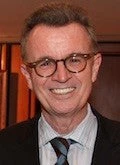One size does not fit all in development policy, as World Bank President, Robert B. Zoellick, emphasized in a recent speech, “Democratizing Development Economics.” The right policies depend on the stage of economic development (amongst other things). What does that mean for the Bank’s overarching objective, a world free of poverty?
 |
| Three construction workers return from a day of work as part of the Rural Roads project to improve access to markets in Rajasthan, India. Photo: Michael Foley |
The Bank’s policy dialogues in poor countries have long emphasized policies to promote economic growth as the main means of fighting income poverty. These include efforts to ensure “pro-poor growth,” such as by avoiding policy biases against labor-intensive production. However, direct redistributive policies in favor of the poor typically get far less attention.
It is not obvious why. Even some very poor countries have high inequality—in fact, some of the highest levels of income inequality in the world are found in poor countries (see the 2006 World Development Report: Equity and Development). And developing countries have redistributive policy options through tax and spending instruments (including cash transfers). There are concerns about trade-offs between equity and efficiency, though it can also be argued that high inequality is an impediment to economic growth. So should direct redistributive interventions play a bigger role?
In a recent paper, “Do Poorer Countries Have Less Capacity for Redistribution?,” I tried to quantify the key “first-order” factor that constrains a country’s capacity for such redistribution—the country’s initial distribution of income. At any one time, the scope for redistribution depends on the extent of poverty in a country, as this determines the revenue required, and the overall affluence of the country’s “rich,” which determines the potential tax base. I simulated a progressive tax on the rich—defined as those who would not be considered poor in the United States—that is sufficient to cover transfers to cover either a given proportion of the aggregate poverty gap (the total deficit in consumptions relative to the poverty line) or a “basic income” scheme, which provides a guaranteed minimum income to everyone.
The results suggest that most countries fall into one of two groups. The first group tends to comprise poor countries, with little hope of making a serious dint on extreme poverty through such direct redistributive policies. For example, the marginal tax rates needed to fill the poverty gap for the $1.25 a day poverty line would be 100% or more for the majority of countries with consumption per capita under $2,000 per year at 2005 purchasing power parity; see the Figure (where tax rates are truncated at 100%). Even covering half the poverty gap would require prohibitive tax rates in these countries. This is also true of basic-income schemes. While it might be argued that there are efficiency gains from such policies in the longer term, the short term tax burdens would appear to be prohibitive.
Figure: Marginal tax rate needed to cover the poverty gap for $1.25 a day poverty line plotted against private consumption per capita

This is not to say that there is no room for redistributive policies in poor countries. There are some poor countries where the poverty gap could be covered by seemingly light taxation of the rich (as can also be seen from the Figure), though these are the exceptions not the rule. There are also “smart” redistributive policies that can help promote growth by selectively attacking specific dimensions of inequality, such as access to finance, agricultural land and basic health and education services. (Conditional Cash Transfers provide examples of smart redistributive policies tied to investments in human capital.) Self-targeted workfare schemes can also play an important role, especially in high-risk but underdeveloped rural economies.
However, these calculations cast doubt on any policy position that puts heavy emphasis on domestically-financed redistribution of incomes in most poor countries—even those with high inequality. Granted there may be longer-term efficiency gains—a steeper growth path starting from a less unequal distribution of opportunities. But the short-term hurdles implied by the domestic tax burdens will be formidable given the sheer weight of poverty and “thinness” of the rich strata.
That is not the case for the second group of countries. Amongst better-off developing countries—over $4,000 per year (say)—the marginal tax rates needed for even substantial pro-poor redistribution are very small—less than 1% on average, and under 6% in all cases (see the Figure). Even basic-income schemes start to look feasible for this group of countries, though in many cases it will need to be a low basic income—well under $1.25 a day.
Most countries will need a mixture of both types of policies. But these research findings suggest that the appropriate mix will depend on the stage of economic development.


Join the Conversation